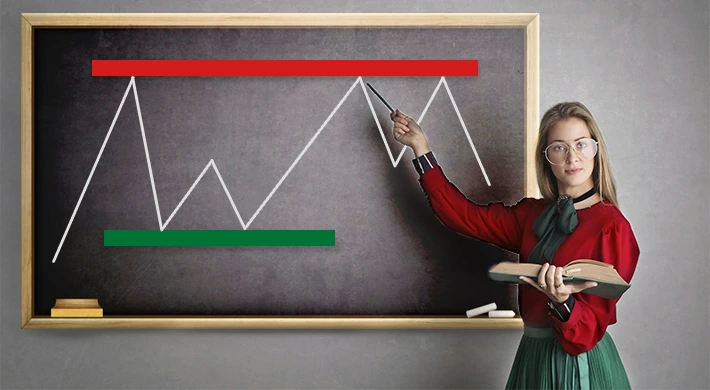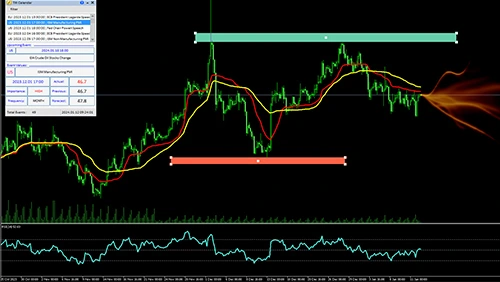Step-by-Step Training:
Mastering the Art of Price Action Analysis
In the last article, we peeled back the curtain on price action analysis, revealing its power as a forex trading tool. Now, let’s delve deeper, embarking on a step-by-step journey to mastering this art form. Buckle up, because we’re about to dissect the intricacies of price action, equipping you with the tools to dissect the market’s movements like a seasoned pro.
step by step training of price action;
Stage 1: Building the Foundation:
- Charting Tools: Choose your weapon of choice – a user-friendly platform with customizable charting options. Focus on clean and uncluttered displays, allowing price action to take center stage.
- Candlestick Mastery: Become fluent in the language of candlesticks. Master their anatomy – body, wick, shadow – and learn to interpret
- their diverse formations: pin bars, engulfing patterns, dojis, and more. Each formation whispers a story about market sentiment, momentum, and potential reversals.
- Support and Resistance: Identify these invisible walls on the chart, where price has historically found difficulty advancing or retreating. These levels act as magnets, attracting price and influencing future movements. Master drawing these levels accurately, using swing highs and lows, volume confirmation, and trendlines.
Stage 2: Delving into the Dance:
- Trendlines: Become a trend whisperer. Draw trendlines to capture the dominant direction of price movement, identifying uptrends, downtrends, and consolidation phases. Use trendlines as dynamic support and resistance, anticipating potential bounce points and breakouts.
- Chart Patterns: Graduate from individual candlesticks to formations that paint a bigger picture. Learn to recognize chart patterns like triangles, flags, head-and-shoulders, and double tops/bottoms. Each pattern holds clues about potential trend continuations or reversals, allowing you to anticipate market direction.
- Volume Confirmation: Don’t be fooled by empty promises. Volume acts as the market’s voting system, confirming the strength behind price movements. Learn to interpret volume spikes alongside price action, verifying breakouts and identifying potential false signals.
Stage 3: Sharpening Your Edge:
- Price Action Validation: Don’t jump the gun. Before entering a trade, validate your price action analysis using additional confirmation techniques. Look for confluence between price patterns, trendlines, and volume to increase your trading accuracy.
- Multi-Timeframe Analysis: Don’t get lost in the details. Analyze the market on different timeframes, from daily charts for the overall trend to hourly charts for entry points. This holistic view ensures you’re in sync with the market’s rhythm.
- Risk Management: Remember, every dance has its pitfalls. Implement robust risk management strategies like stop-loss orders and position sizing to limit potential losses and protect your capital.
- Practice Makes Perfect: Like any skill, mastering price action analysis requires dedication and practice. Backtest your strategies on historical data, refine your analysis through live market observation, and constantly seek to learn and improve.
Step 4: Advanced Techniques:
- Once you’ve mastered the basics, explore advanced price action techniques like order flow analysis, volume analysis, and Elliott Wave theory. These specialized tools can further refine your understanding and provide deeper insights into the market’s internal dynamics.
In the following articles, we will teach more complementary methods.
Navigating the Diverse Landscape:
While the core principles of price action analysis remain consistent, diverse approaches exist, catering to different trading styles and risk appetites.
Here’s a glimpse into some popular variations:
- Naked Price Action: Focuses solely on price movements and candlestick patterns, eschewing technical indicators for a minimalist approach.
- Price Action with Indicators: Combines price action with technical indicators like moving averages or MACD, seeking additional confirmation signals for entry and exit points.
- Supply and Demand Zones: Identifies areas of high trading activity, where buyers and sellers clashed in the past, potentially leading to future support/resistance levels and reversal opportunities.

Bonus: Specialized Literature:
- “Trading in the Zone” by Mark Douglas
- “The Complete Guide to Price Action Trading” by Rayner Teo
- “Trading Price Action Trends” by Barry Ritholtz
These resources offer deeper dives into specific price action patterns, strategies, and trading psychology – essential tools for your price action arsenal.
Embrace the Journey:
Mastering price action analysis is a rewarding journey, not a destination. It’s a continuous process of learning, adapting, and honing your skills. With dedication, practice, and a deep respect for the market’s rhythm, you’ll soon be waltzing with confidence through the intricate dance of price movements. So, take the first step, embrace the challenge, and watch your trading acumen flourish under the guidance of price action analysis.
Happy trading
may the pips be ever in your favor!










